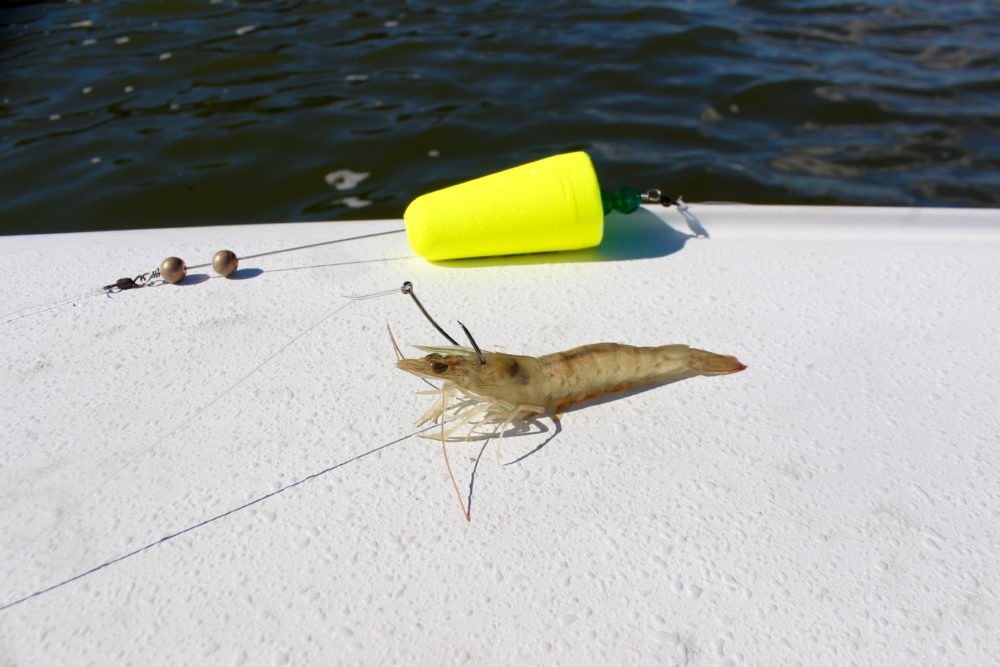Fishing resources and tips for the empowered female angler.
How to Rig Shrimp for Saltwater Fishing
June 26, 2012
Not sure exactly how to rig a live shrimp? Don’t worry, it’s an easy enough saltwater fishing skill to learn. Besides, it’s one of the very best baits you can use for species like redfish and spotted seatrout. The first thing to remember is that your bait will bring on the most bites when lively and properly rigged.

For most inshore fishing situations, you can rig shrimp using one of two common methods. Choose the method that you think will work best after assessing water clarity and conditions. More importantly, don’t forget to store your shrimp in a livewell, or use a bait bucket with an aerator.
Rig Your Shrimp Under Popping Cork
If water conditions are cloudy or murky, a popping cork with weighted metal beads will often elicit a strike from a redfish or spotted seatrout. With a twitch of your line, the metal beads beneath the popping cork produce a clacking sound beneath the surface of the water. This sound attracts game fish because it mimics the sound of a shrimp fleeing.
All you need to rig a shrimp using this method is a brightly-colored weighted popping cork, about 2 to 4 feet of fluorocarbon leader (depending on water depth), and a 1/0 or 2/0 circle hook. Look at the upper section of the shrimp’s shell or carapace, and you will see a v-shaped demarcation. Insert the point of the circle hook near the bottom of the v-shaped demarcation, and then push it through the carapace of the shrimp. Once the barb of the hook is pushed all the way through the opposite side of the carapace, be sure to put your line and shrimp into the water as quickly as possible.
Freeline Your Shrimp
Another rigging method is referred to as “freelining” or drifting your shrimp in the current. Freelining is simple because it doesn’t require any weight or popping corks. The purpose of freelining a shrimp is to allow it to swim or drift naturally along with the current. That said, this is a good technique to use when there is plenty of moving current.
All you have to do when freelining is tie a 1/0 or 2/0 circle hook to your leader using a clinch knot or a non-slip loop knot. From there, you can either rig the shrimp through the carapace or insert the hook under the tail (in through the bottom and out the top). Many professional anglers prefer rigging live shrimp through the tail when freelining. This way, when you give your line a twitch, the shrimp twitches backwards in the water, which is it’s natural fleeing motion.
Now that you know about two commonly used techniques for rigging shrimp, get a few tips on how to properly maintain your saltwater fishing gear.